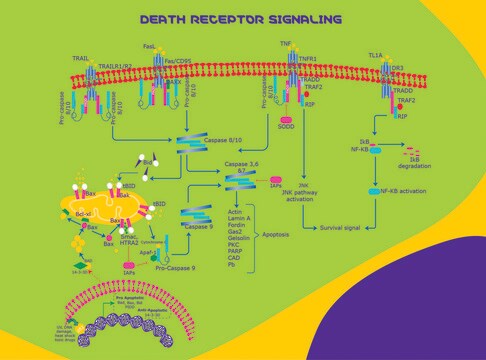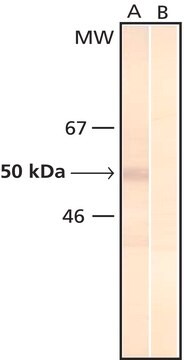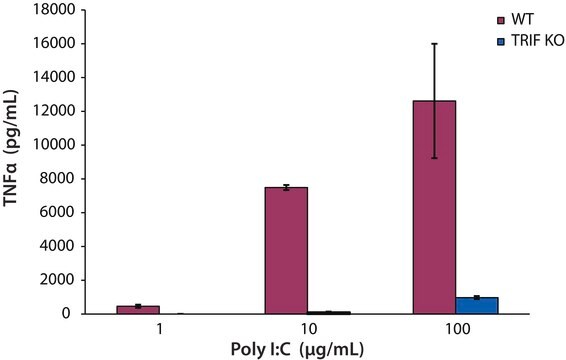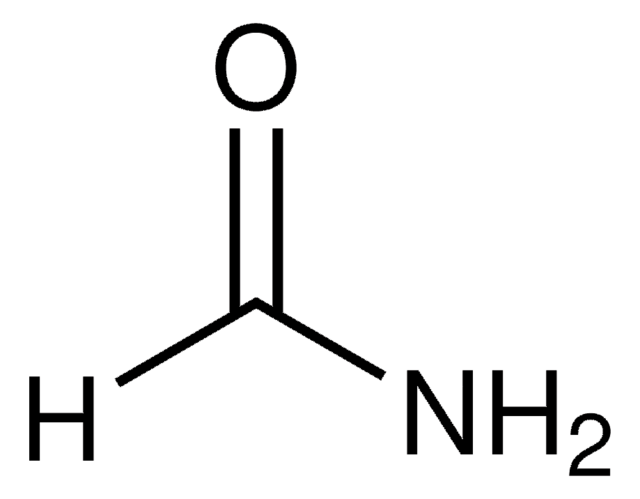F0427
Fas Ligand human
>95% (SDS-PAGE), recombinant, expressed in CHO cells, lyophilized powder
Sinónimos:
FasL
About This Item
Productos recomendados
recombinant
expressed in CHO cells
Quality Level
assay
>95% (SDS-PAGE)
form
lyophilized powder
mol wt
monomer calculated mol wt ~18 kDa
26-28 kDa by SDS-PAGE
impurities
endotoxin, tested
UniProt accession no.
storage temp.
−20°C
Gene Information
human ... FASLG(356)
General description
Application
- the study of FASLG stimulation in luteal cells obtained from mid-corpus luteum (CL) and
- the study of apoptosis induction and intracellular caspase-3 assay in human cells.
Biochem/physiol Actions
Other Notes
Physical form
Analysis Note
signalword
Warning
hcodes
pcodes
Hazard Classifications
Eye Irrit. 2 - Skin Irrit. 2
Storage Class
11 - Combustible Solids
wgk_germany
WGK 3
flash_point_f
Not applicable
flash_point_c
Not applicable
Certificados de análisis (COA)
Busque Certificados de análisis (COA) introduciendo el número de lote del producto. Los números de lote se encuentran en la etiqueta del producto después de las palabras «Lot» o «Batch»
¿Ya tiene este producto?
Encuentre la documentación para los productos que ha comprado recientemente en la Biblioteca de documentos.
Nuestro equipo de científicos tiene experiencia en todas las áreas de investigación: Ciencias de la vida, Ciencia de los materiales, Síntesis química, Cromatografía, Analítica y muchas otras.
Póngase en contacto con el Servicio técnico






